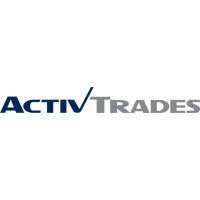The day after Warren Buffett met Jack Byrne Berkshire Hathaway bought over $1m shares in GEICO and Buffett left instructions for the purchase of many more – soon a total of $4.116m was spent on 1,294,308 shares, an average of $3.18. This purchase must have been a real boost for Byrne – at least someone besides himself believed in the possibility of reviving the company.
Another glimmer of hope: in mid-July the Washington insurance superintendent eased up on his hurdles to permit GEICO to continue. Now all that was required was for it to persuade a group of other insurance companies that it should be able to pass-on 25% of its risk exposure to them. Oh, and it needed to raise at least $50m of new capital!
This was being asked of a company that had one of the worst ever combined ratios of an insurance company at 124 in 1975. This means that for every dollar it took in on policies it paid out $1.24 in claims liabilities and expenses.
In the long history of the company this was the first time it had reported an annual loss on underwriting. Byrne, clutching at straws, highlighted that in the second quarter of 1976 the combined ratio had improved to 113. But everyone could see that was still a loss on its core business and therefore a very hard sell to both other insurers being asked to take on GEICO’s policy risks, and a hard sell to potential future shareholders.
Buffett and Byrne roll up their sleeves
Confidence in the GEICO name was very low, but Byrne had a new card to play. He had the backing of Warren Buffett, a man who was increasingly recognised on Wall Street as a shrewd investor and as the leader of a well-run insurance company, National Indemnity.
Not only was Buffett prepared to give an opinion on Byrne’s plan, on the quality of GEICO’s economic franchise and on Byrne’s character, but he had backed his judgement with a $4.116m buy. His involvement had the power to change the dynamic in negotiations with others.
Now that he and Byrne were working for a common cause, Buffett went to see the Washington Superintendent. Buffett explained that he had both committed millions of dollars and agreed that BH would take on some of GEICO’s insurance risk. Surely, even the strictest of regulators will allow enough time (a few months) to both bring in other insurers and to sell newly-minted shares?
The problem was that the other insurance companies would not take 25% of the risks off GEICO unless it had raised the additional $50m. On the other side, and the financial institutions were not willing to put in $50m unless a quarter of the insurance risks had been removed.
So the solution lay in getting the two actions to take place at the same time. Byrne had his work cut out. By early August he managed to persuade 27 insurers to reinsure one-quarter of its exposure. But this was on the strict condition that GEICO succeeded in selling at least $50 million of new shares.
There’s the rub – he had to get bankers involved to underwrite a share issue. He traipsed around to the big investment banks of Wall Street to gain their support for an issue, but one after another rejected him.
He was getting desperate when he went to see a relatively small firm which specialised more in bond-trading than in equity raising, called Salomon. It so happened that they wanted to build up the equity side of the business and so they listened to Byrne’s pitch. They had heard of Buffett’s commitment to GEICO and could see how it could be saved and generate a good return for shareholders.
A share offer
On August 18th The New York Times ran a story that “a major investment bank had offered to purchase and reoffer to the public any of the new preferred shares” GEICO was selling. Salomon, would take any of the 10m shares ($76m) not subscribed for either by existing shareholders through the rights offering or subscribed for by “members of the casualty insurance industry that have agreed to participate in a reinsurance arrangement with GEICO”.
The preferred shares offered 8% per year, but were also convertible to common stock. Thus the reinsurers could rescue GEICO, and avoid a lowered reputation for the insurance sector, as well as receive reinsurance premiums. They would also gain from any upside in the fortunes of GEICO by converting their preferred shares into common shares in the future.
Jack Byrne, later said: “The interlocking puzzle of constituents we had to bring together was staggering. The greatest challenge was the human element. We had

………………To read the rest of this article, and more like it, subscribe to my premium newsletter Deep Value Shares – click here http://newsletters.advfn.com/deepvalueshares/subscribe-1

 Hot Features
Hot Features













